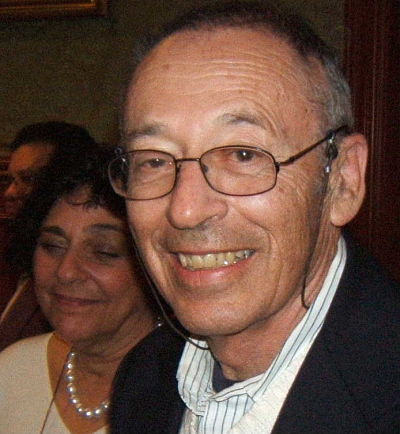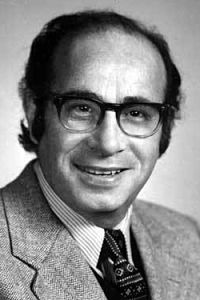Barney Glaser, 1930-2022: The Guardian of Grounded Theory
Sociologist Barney G. Glaser, who co-discovered the qualitative methodology known as grounded theory, has died at age 91 of Parkinson’s disease. Glaser died on January 30 at his Mill Valley, California home with his family with him, according to the Institute for Research and Theory Methodologies, which is the home of the Glaser Center for Grounded Theory.

Grounded theory grew out of extensive qualitative research on dying hospital patients conducted by Glaser and sociologist Anselm Strauss in the early 1960s. The method flips the common research process of starting with a theoretical framework to assess what data is gathered. It instead first systematically gathers and analyzes data, and only at that point erects a theoretical or hypothetical scaffolding.
There is of course more to grounded theory, including specific techniques for capturing and coding qualitative responses, but it was intent from the start on demonstrating – and perhaps resuscitating — the legitimacy of qualitative social science research. It “is reportedly the most invoked method in qualitative research worldwide,” Astrid Gynnild and Vivian B. Martin wrote in their 2011 book, Grounded Theory: The Philosophy, Method, and Work of Barney Glaser.
The resulting extensions to classical grounded theory – as well as the criticism that dogged it — gave Glaser a raison d’être after he left institutional academe. An “academic nomad” for the past three decades, Glaser wrote extensively and conducted a stream of seminars to maintain his – and classical grounded theory’s – good reputation.
“Whatever your position on #groundedtheory,” Jenna Breckenridge at the University of Dundee tweeted the day after Glaser’s death, “he revolutionised qualitative research. He had an enviable passion for his work and for mentoring others – I was lucky to receive a little back in 2010. Farewell Dr Glaser.”
Barney Galland Glaser was born on February 27, 1930, to a wealthy family in San Francisco, California. In retelling his early life, Glaser created an aura of absolute autonomy, saying “I was always on my own.” He told Gynnild that when he was age 5, he needed to remind his mother that he ought to be attending kindergarten, and then having a chauffeur attend to the details so he could enroll. “So I was on my own at the age of 5. My parents hardly knew that I went to college.”
Attend college he did, earning a bachelor’s degree in sociology at Stanford University in 1952. He spent two years in the U.S. Army, which allowed him in his off hours to first attend the Sorbonne in Paris, studying contemporary literature, and then the University of Freiburg, studying literature.
He and his German then-girlfriend moved to the United States, and when that relationship failed, Glaser entered psychoanalysis. He would tell Gynnild that the therapy allowed him to “get the exact data [about himself] to see what it is,” and that data capture was a key building block of what would be grounded theory. “The true devotion to data, the true source came from psychoanalysis.”
Glaser would return to higher education and to sociology at Columbia University. Glaser said he was “all in” on sociology when he was an undergrad at Stanford and retained his allegiance to the discipline. “In buying the program 100 percent,” he would explain in a 2005 keynote at the International Qualitative Research Convention, “I bought the four dimensions of doing sociology – autonomy, originality, contribution and the power of sociology. All dimensions are interrelated; they became a part of my sociological identity and led eventually to my originating grounded theory.”
At Columbia he studied under Paul Lazarsfeld and Robert K. Merton, and his experiences under these greats helped him craft grounded theory – not by what they taught, but in rejecting how they taught.
“He particularly disliked Merton’s behaviour to his students, accusing him of ‘[controlling] everyone, undermining their confidence and straight-jacketing creativity’; behaviours which led to six students failing their PhD ,” counselor Damian A. Stoupe observed in his 2020 dissertation, citing incidents Judith Holton outlined in her chapter of Grounded theory: The philosophy, method, and work of Barney Glaser. “Glaser, while still a student at Columbia University, had fun in the creative ways in which he gained vengeance: writing a paper challenging Merton’s views and sending over 2,000 reprints around the world and submitting his notes from one of Merton’s lectures for peer review in the American Sociological Review and receiving the anonymous feedback that they were ‘reified gibberish.’”

Nonetheless, Glaser received his PhD in 1961; his dissertation was soon published as Organizational Scientists: Their Professional Careers. He returned to his hometown as a post-doc at the University of California, San Francisco, where he taught methods and collaborated with Anselm Strauss, who had founded the Department of Social and Behavioral Sciences at the university. They worked together on a study of dying patients at some California hospitals. A book, Awareness of Dying, arose from the collaboration. Published it 1965, it was an immediate success.
The methodological approach that Awareness highlighted led to a sequel, of sorts, in the duo’s The Discovery of Grounded Theory. “They asserted that the twofold process of firstly generating and subsequently verifying a theory should receive equal treatment within social research,” Méabh Kenny and Robert Fourie observed in an excellent 2014 article, “Tracing the History of Grounded Theory Methodology.” “However, they observed that ‘since verification has primacy on the current sociological scene, the desire to generate theory often becomes secondary, if not totally lost, in specific researches.’”
Released two years after Awareness, Discovery proved even more successful and influential than had the older work.
Glaser later explained that drafted most of The Discovery of Grounded Theory, again hitting on the need for autonomy that marked his professional career. “Anselm loved me,” Glaser would write in his solo-authored Basics of Grounded Theory Analysis in 1992, “but he never understood me or my roots in sociology and my thoughts and idea input into grounded theory, which shaped it as we know it today. Nor did he ever try to understand my background.”
Joining that desire for autonomy now was an insistence on orthodoxy. As Stoupe wrote two years ago, “Glaser has functioned as the guardian of the purity of the method over the last 50 years” even as grounded theory split into several schools and Glaser himself split professionally from Strauss.
The split appeared in paper well before Basics appeared. Glaser had written a second grounded theory methodology, Theoretical Sensitivity, by himself, in 1978. Strauss published his Qualitative Analysis for Social Scientists in 1987, and with Juliet Corbin, Basics of Qualitative Research: Grounded Theory Procedures and Techniques, in 1990. The latter grated on Glaser, who wrote to Strauss, “I demand that you withdraw the book pending a rewriting of it. And then you and I sit down and go through each page of the book and iron out what I consider to be the misconceptions and then rewrite the book by mutual consent.”
They didn’t, and even dedicated the text “to Barney Glaser with admiration and appreciation.” Glaser responded with Basics.
“I published Basics and everybody was unhappy,” he later told Gynnild. “Anselm was running out of soft money. It wasn’t even quitting, so much as that of a progression.” Glaser left UCSF and became an independent scholar. “Well, I didn’t teach any more, but I was still writing, wasn’t I? It wasn’t a big split or a big disjunction, or juncture, more just a progression of doing more of one thing and less of another. I think Basics turned a lot of people against me. It wasn’t that they threw me out, but all of a sudden there was no more research money.”
Glaser published nearly a dozen books about the method “to correct the record and explicate grounded theory.” Gynnild and Martin wrote, Glaser, they noted, would argue that Strauss — who died in 1996 — “was the one who deviated from grounded theory’s “established definitions.”
Ever vigilant, “for Glaser,” Stoupe wrote, “the remodelling of GT by many of those in the room represented the transformation of a simple research method into a complicated jargonised, specialist process.” His 2009 article “Jargonizing: Using the vocabulary of Grounded Theory,” for example, is a broadside at the apparently apostate content in the SAGE Handbook of Grounded Theory (“90% jargonizing distortion of GT as originated,” he claimed!). And despite his disdain, Glaser kept his critiques professional, such as when his former student, the late Kathy Charmaz, dared to promote what she dubbed “constructivist grounded theory.”
He was proud of his business acumen, such as refurbishing and renting out houses and in processing loans (although the Cascade Acceptance Corporation he founded in 1968 filed for bankruptcy in 2009 and was liquidated the year after). In 1970 Glaser started the publishing company Sociology Press, specializing in his grounded theory methodologies and readers. And in 1999 he founded the non-profit Grounded Theory Institute and it bespoke journal, Grounded Theory Review: An International Journal.
No comments:
Post a Comment